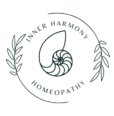Many women experience menstrual cramping pain, and ibuprofen is often the only choice for pain relief. However, a cell salt can help with this monthly issue and can even relieve contractions occurring during or after birth. This little gem is called Mag phos 6x.
I used Mag phos 6x during the birth of my second daughter. The 6x is low potency, so it was acceptable to take it very frequently. I put a few of the little white pills in a bottle of water and sipped on it during labor. Mag phos 6x and Arnica were two remedies I used during the birthing process. (It was a beautiful home birth with no complications.)
After the birth of my second daughter, I experienced cramping pain while I was nursing her. I kept my small bottle of Mag phos 6x in the pocket of my breastfeeding pillow so I could take a dose when needed. I was so grateful to have this simple and non-toxic medicine available to guide me through any postpartum issues gently.
With homeopathic medicine, you must match the symptoms to a remedy. According to Morrison (1993), indications for Magnesium phosphorica include abdominal pain that is better for pressure, better from heat, and better from doubling over. If the pain is intense, Mag phos 30c might help, but the symptoms must match the remedy.
However, this effect is a temporary and palliative solution. The only way to correct this imbalance is with homeopathic chronic care. A homeopathic remedy selected based on the totality of symptoms is a long-term solution. I used to get cramping pain before my menses, and after chronic constitutional homeopathic care, those symptoms are gone.
Symptoms during menses indicate an imbalance. Irritability, head pain, vertigo, or digestive upset before menses are valuable symptoms for a homeopath to use for remedy selection.
If you have symptoms during menses or any other signs of a hormonal imbalance, consider chronic care with a homeopath. I am currently taking clients as a student practitioner. You can schedule a consult by requesting me on the Homeopathy Helpnow website. Click here to get started.
Reference
Morrison, R. (1998). Desktop Companion To Physical Pathology. Hahnemann Clinic Publishing.
This post may contain affiliate links, and I may receive a small commission if you order a product on my website using them. There is no additional cost to you. Thank you for supporting this blog.
This information is for educational purposes only, it is not a substitute for professional medical advice, diagnosis or treatment. The Author disclaims all liability for any loss or risk, personal or otherwise incurred as a consequence of use of any material in this article.
